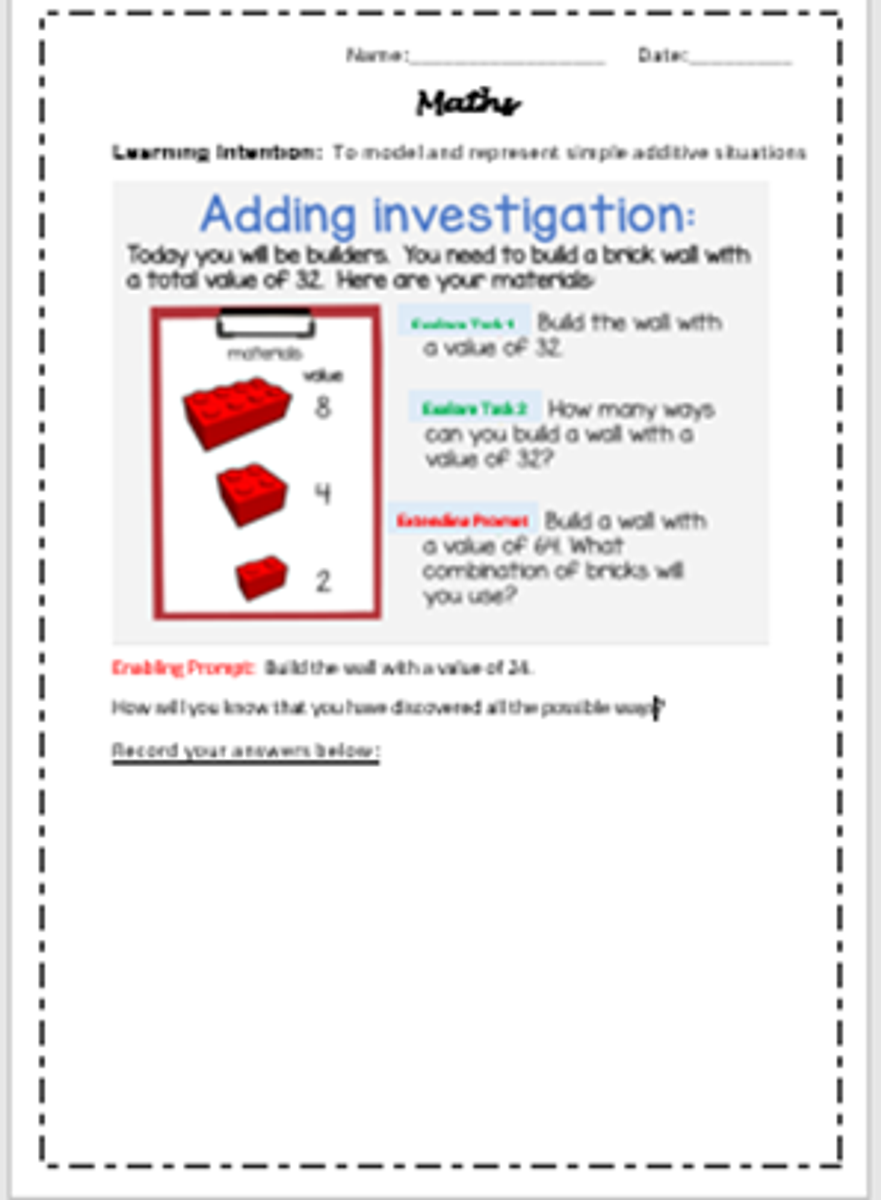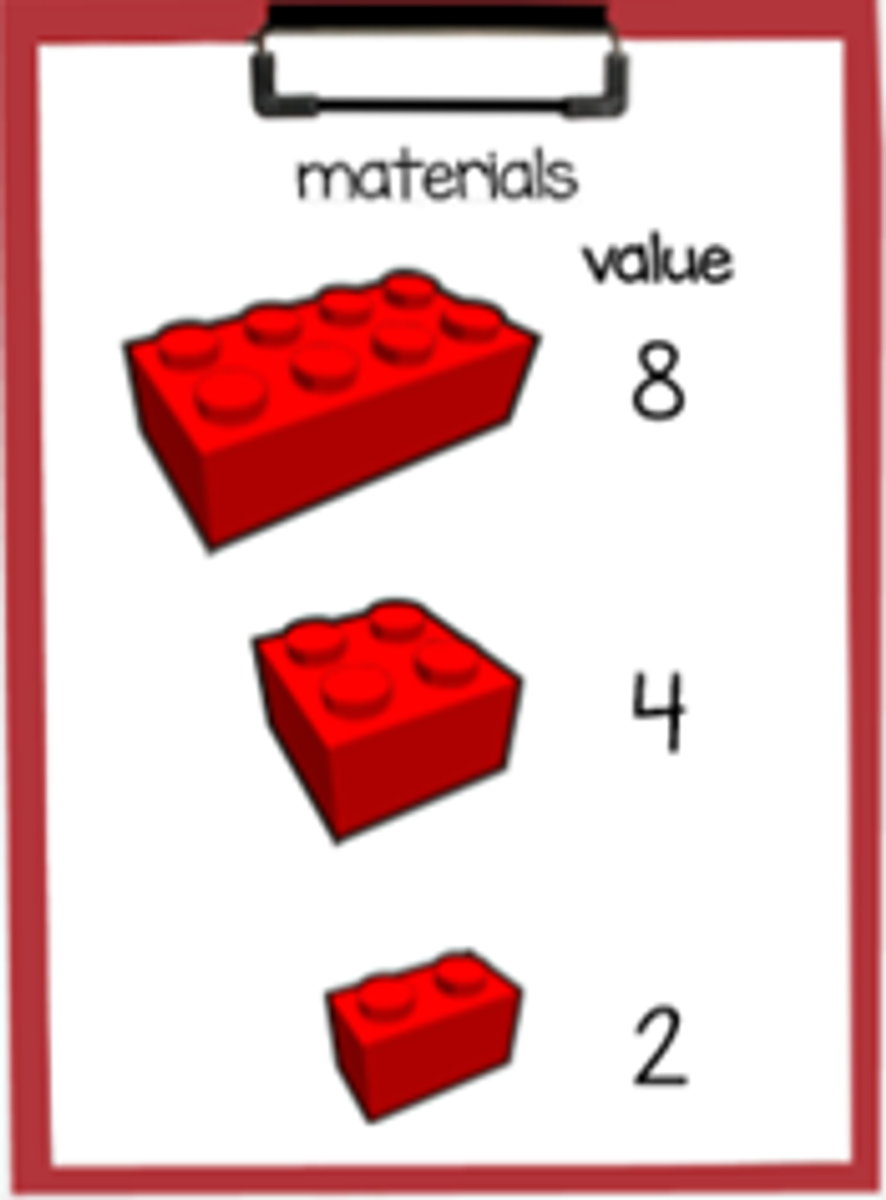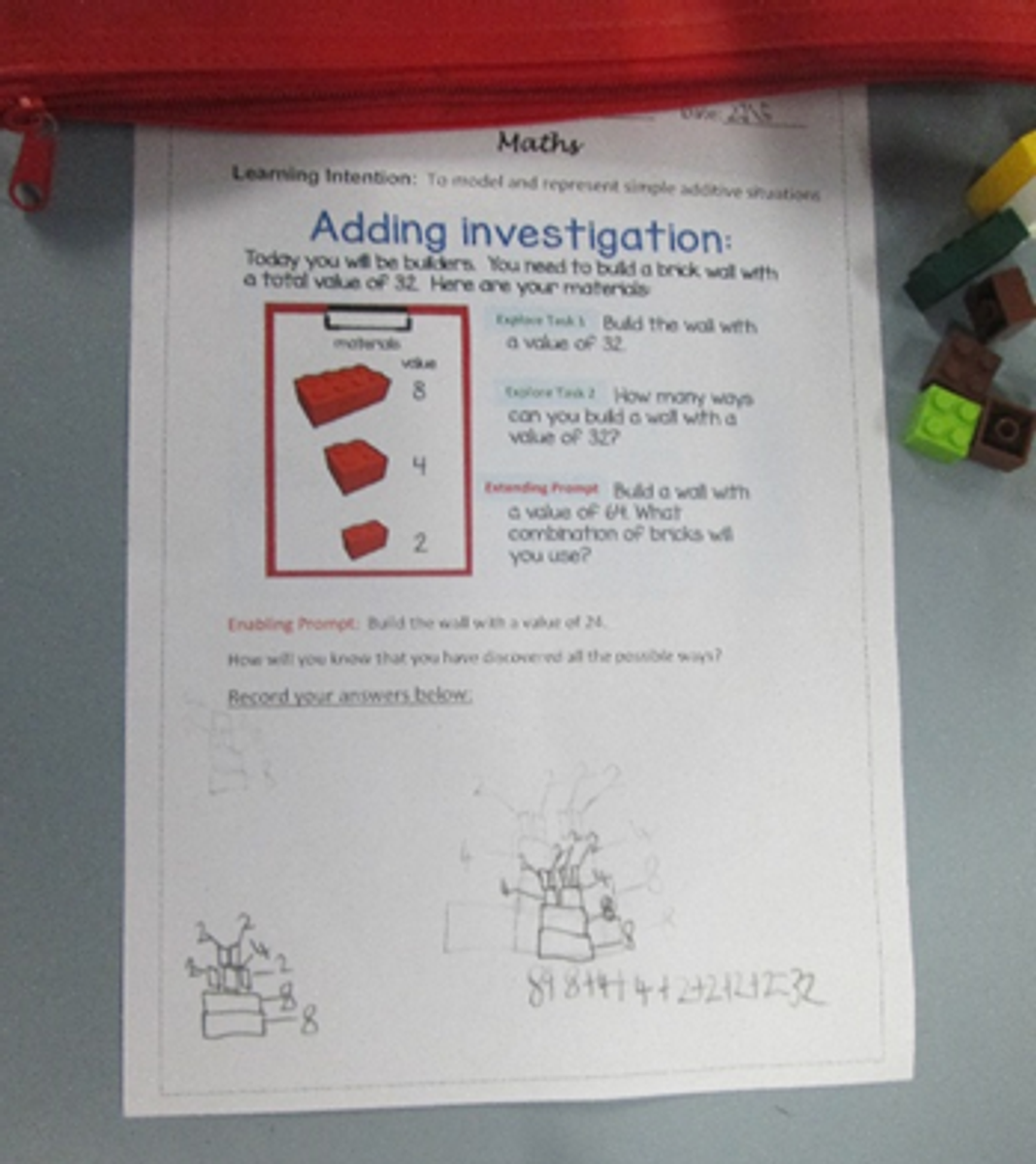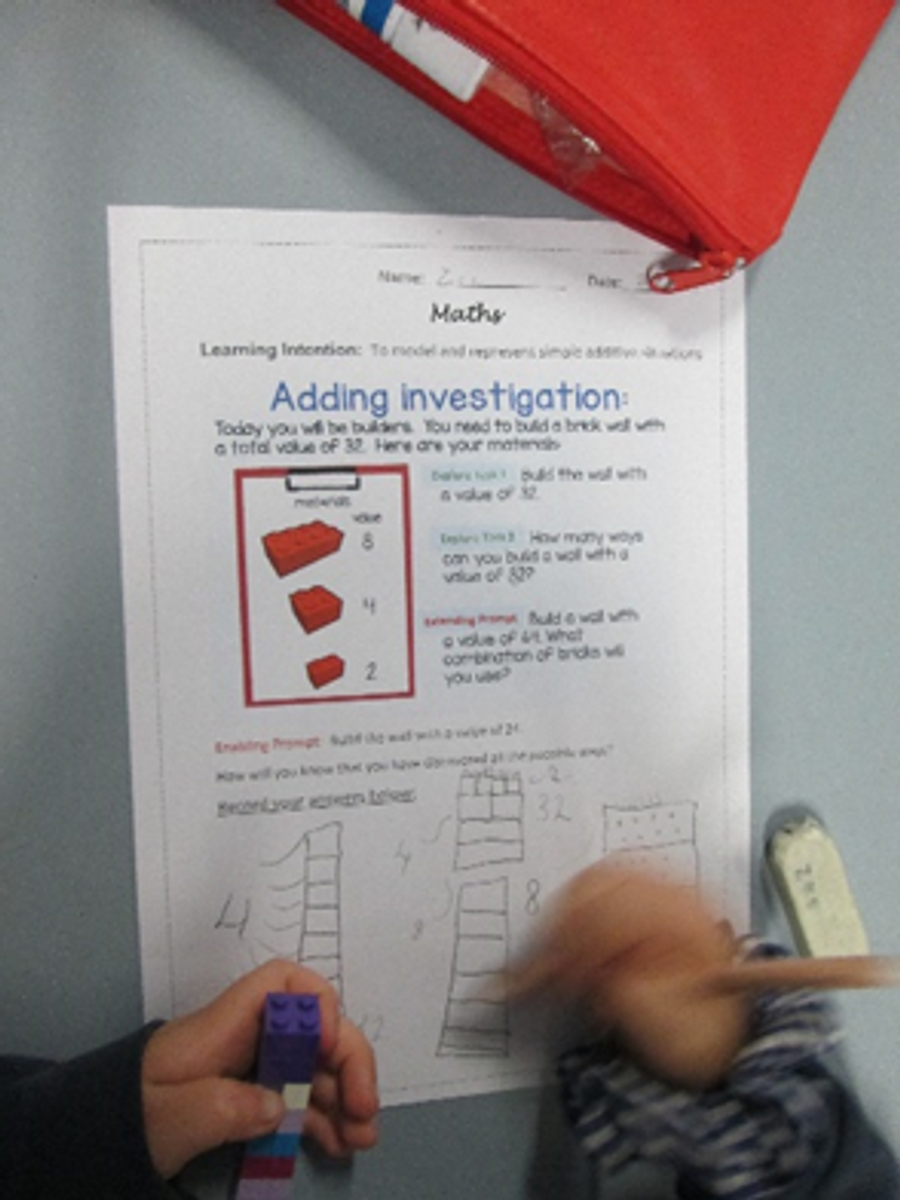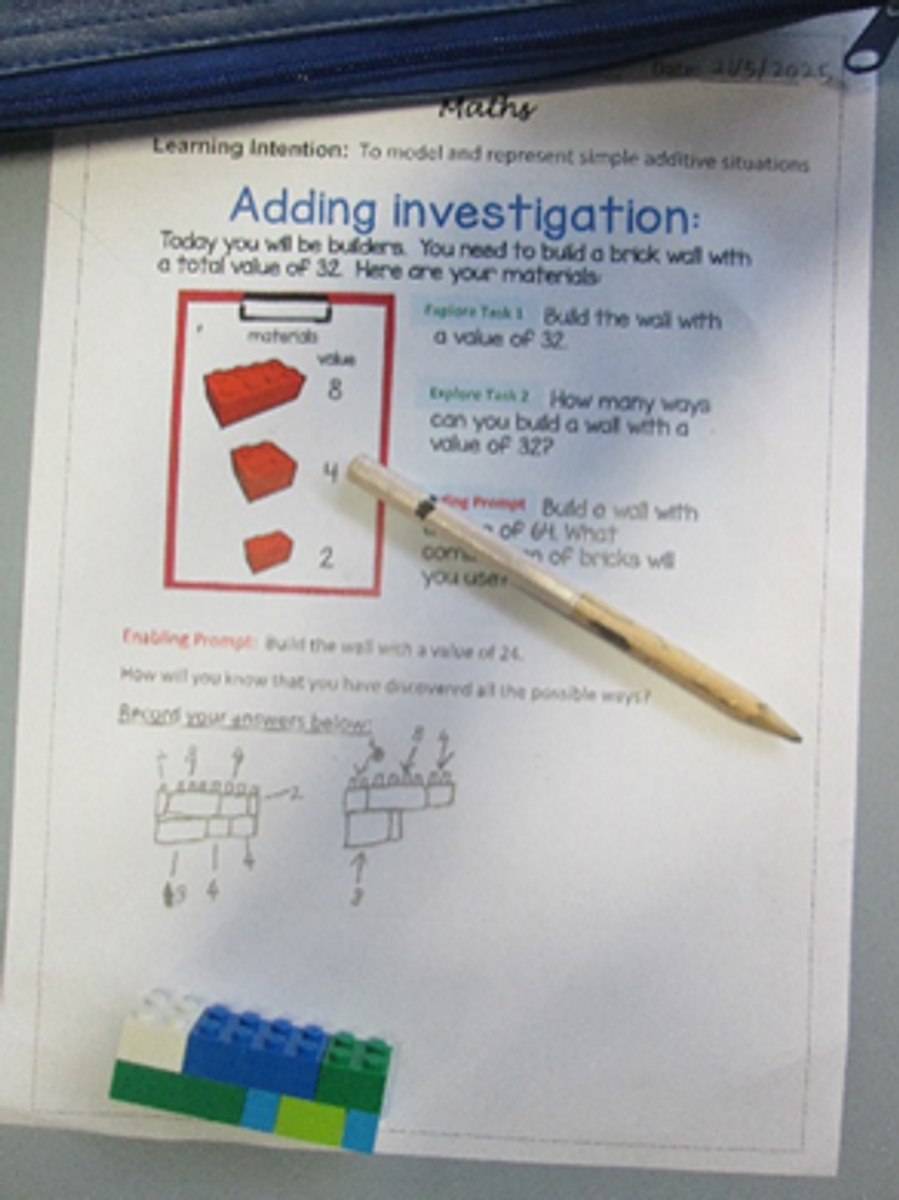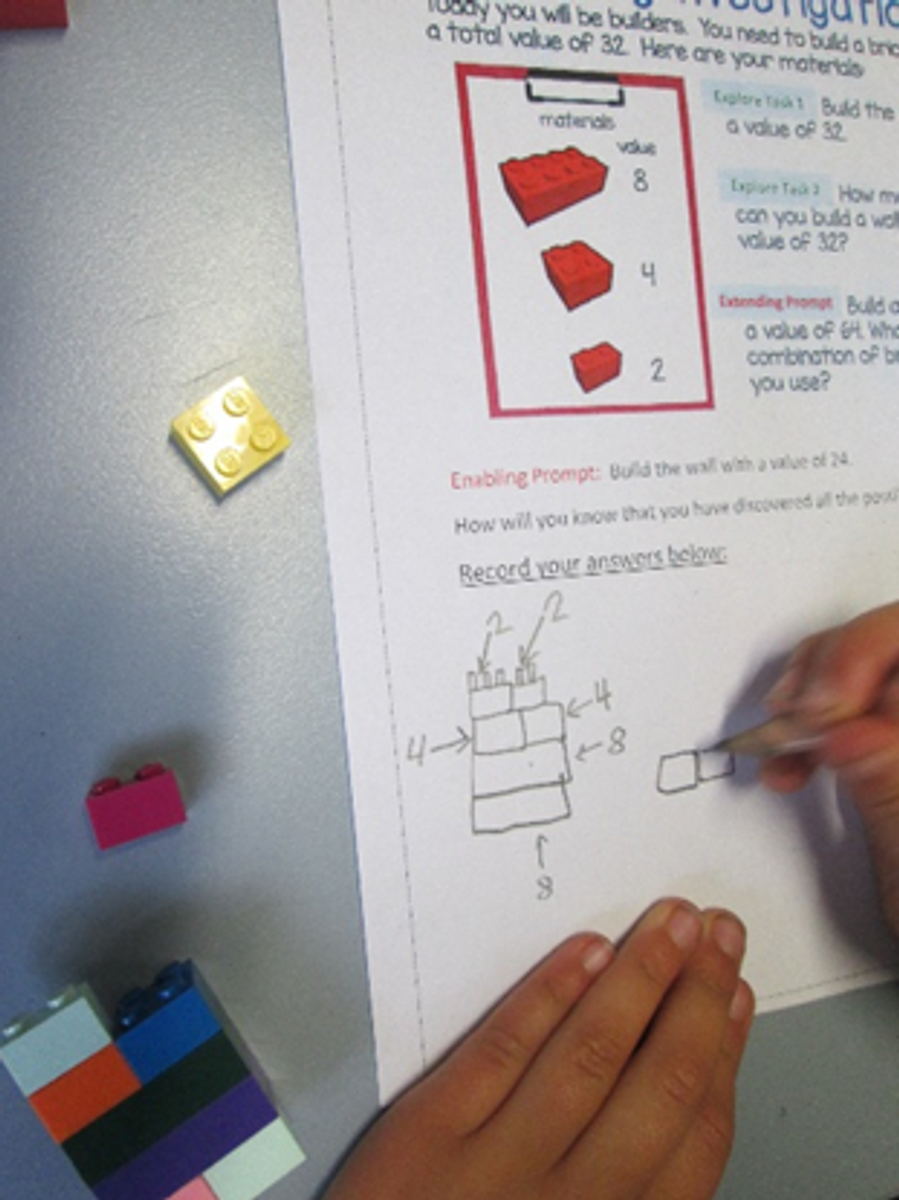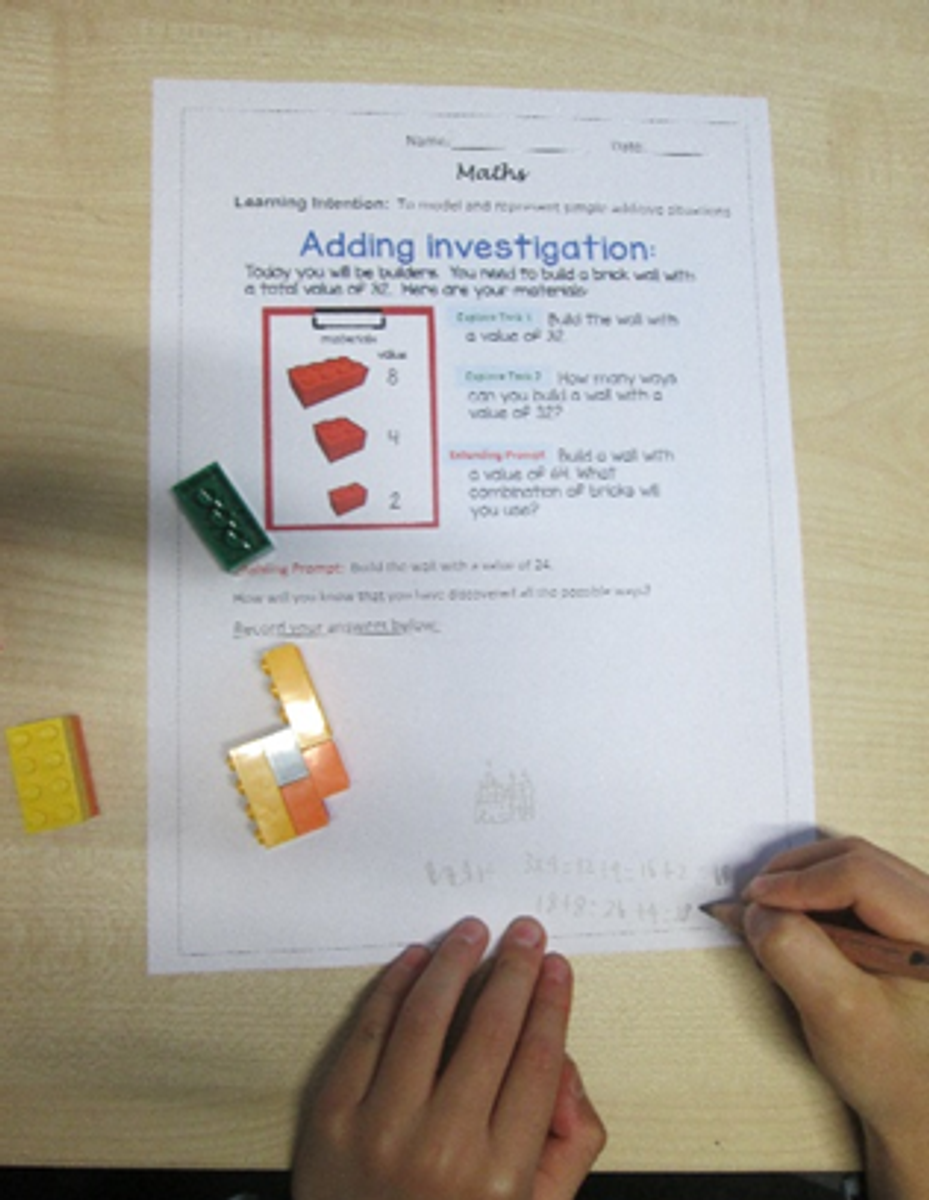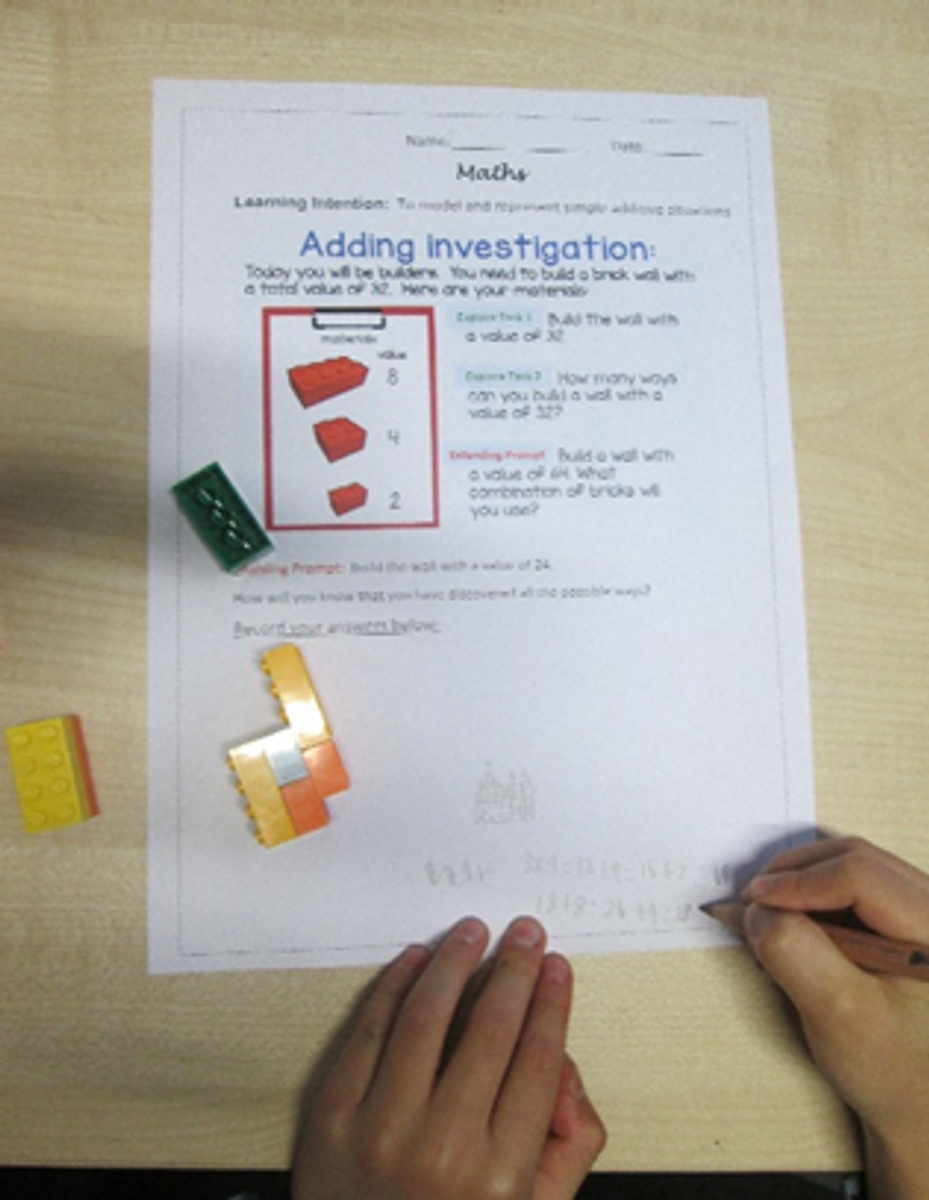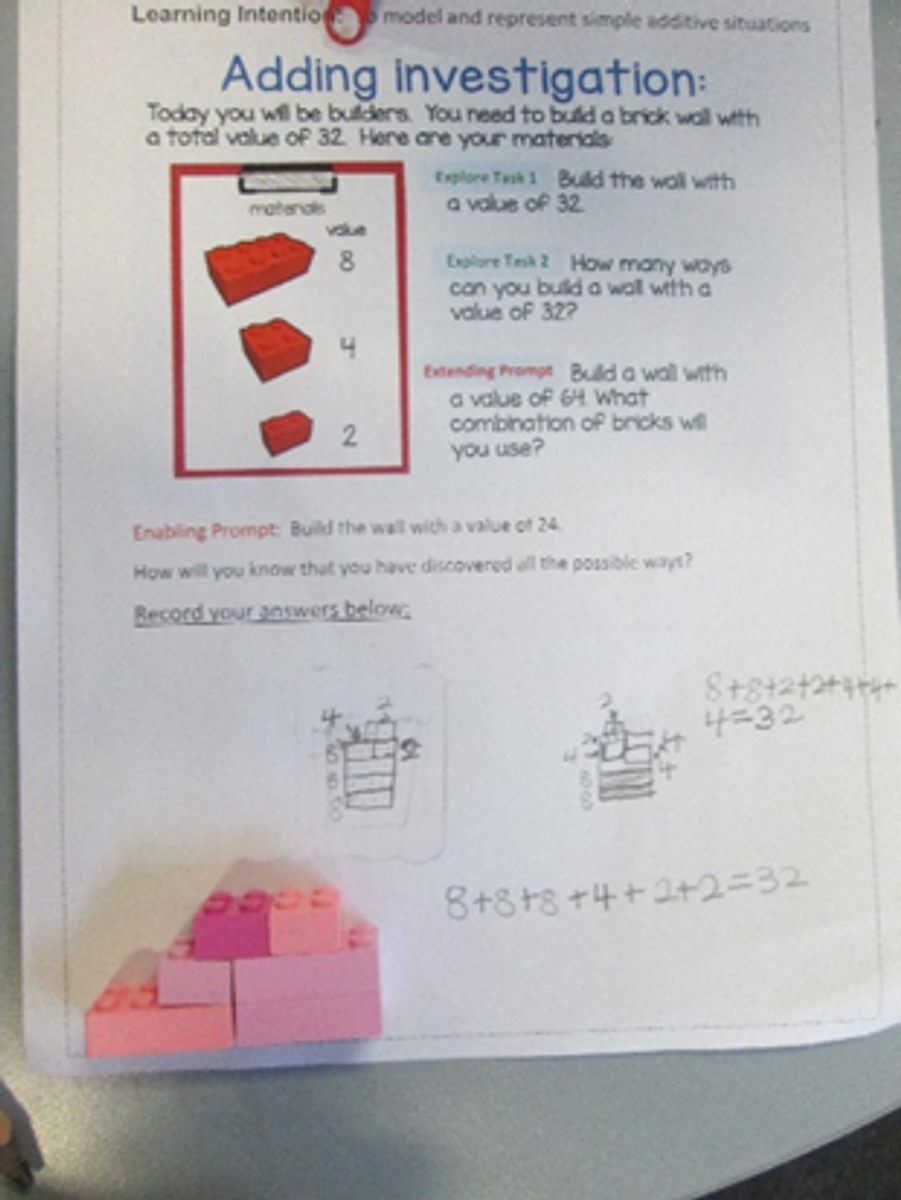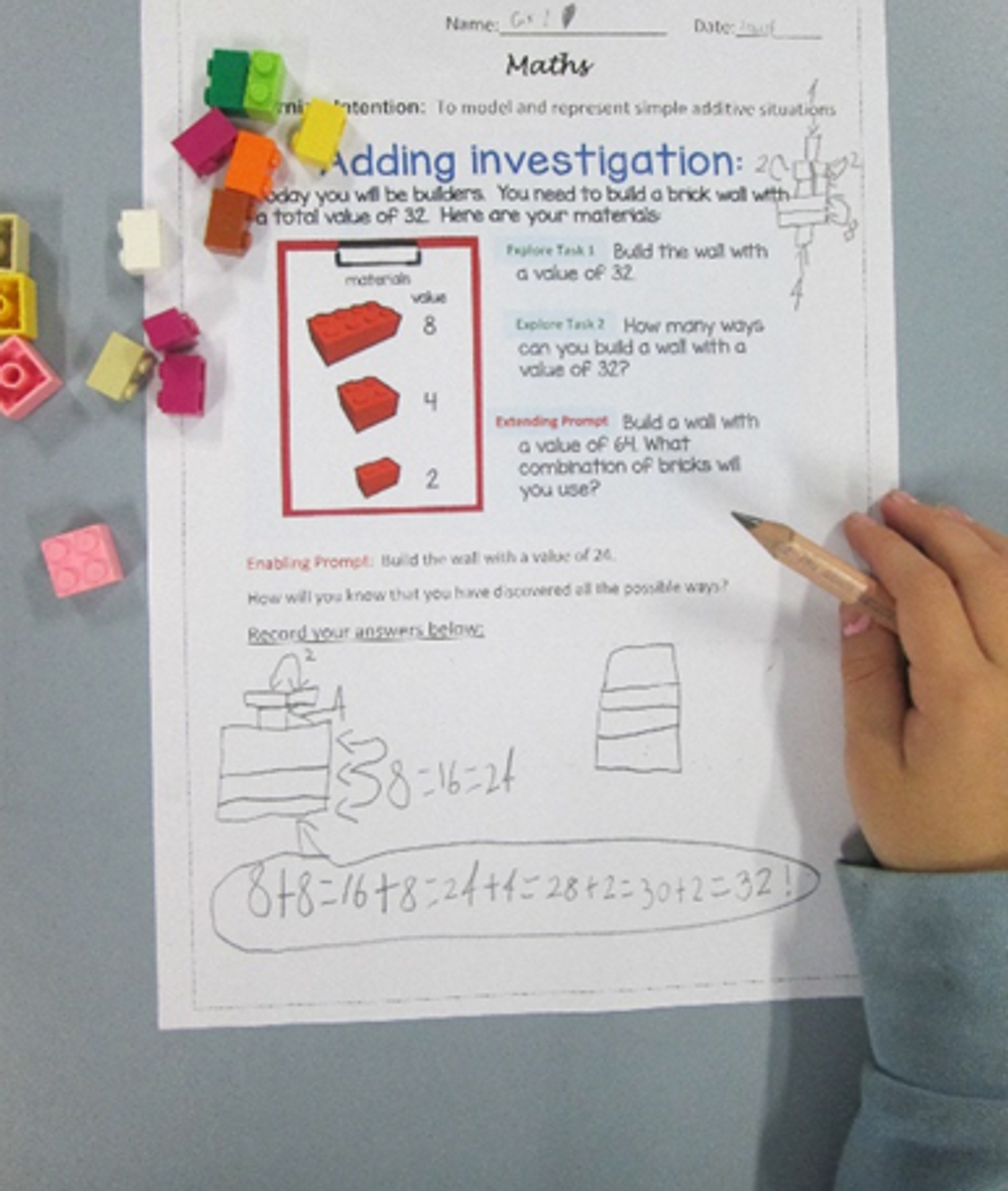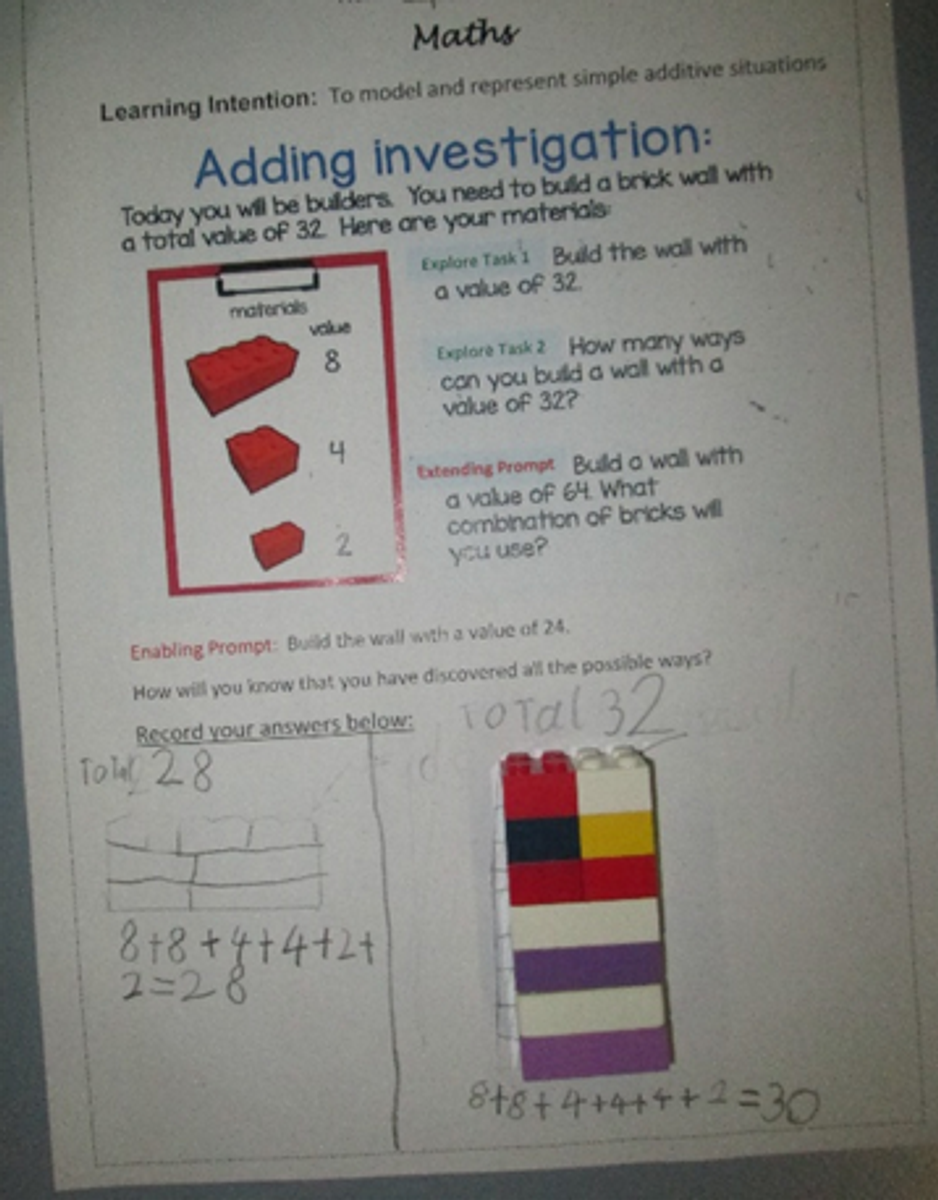Year 2 Bulletin
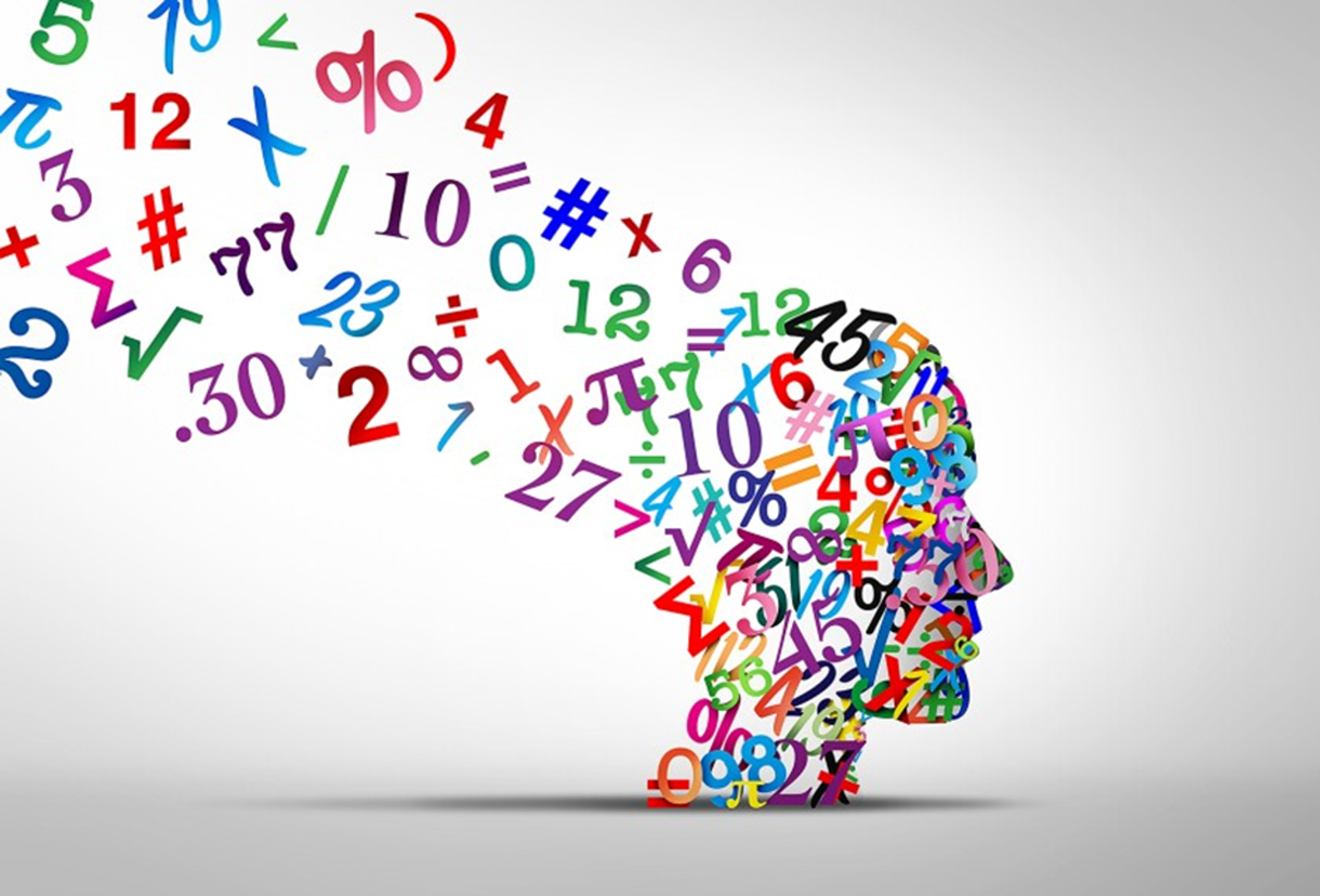
Number and Algebra /Number and Place Value
Learning Intention: To select appropriate strategies to use when solving additive problems.
Learning experience overview:
We have continued to explore different additive strategies that will assist us when approaching a problem that requires two or more numbers to be added – doubles, near doubles, counting on, building to the next 10, partitioning (split strategy), turnarounds (the Commutative Law), using tens frames and number lines.
Specific sized Lego bricks were provided, according to the values of the dots on each brick.
Students could use any combination of bricks to reach the target number.
For this activity students chose the strategy they felt worked best for them, and used it to solve the problem. We encouraged them to be as creative as possible, with their choice of bricks, and the combinations used.
Their answers are recorded, in the space below the instructions.
We asked them to reflect on their own learning, highlighting strategies used, ideas discovered and problems encountered, using the back of the page.
Prompts/questions/responses
- What did you notice about using Lego bricks?
- What did all the bricks have in common? How were they different?
- What helped you to build your wall quickly?
- Could you see any patterns in the way the bricks could be used?
- What was the name of the strategy that you used?
- How will you know that you have discovered all the possible ways?
What you can do now at home, to continue the learning from this experience
- Look for number patterns around you
- Create opportunities to add numbers of different values
- Compile a list of special numbers – perhaps the birthdays of family members, then add the day and month, or all the days, or all the months
- Add coins of different denominations, taking note that 5c + 5c = 10c, 10c + 10c = 20c is really doubling, and so on
- Build your own Lego walls, counting the value of the bricks
- Choose a random number and count forwards by 10 - 23, 33, 43, 53, 63 – to 100 and beyond. Then count backwards by 10 to the original number
- Practise learning all the number pairs to 10 (9+1, 8+2. 7+3, 6 +4 etc) by heart
- Then try number pairs to 12, 20
- When counting any number of items, count by 2’s or 5’s or 10’s rather than simply in 1’s
Mrs Evans and Emma
Year 2 Team

